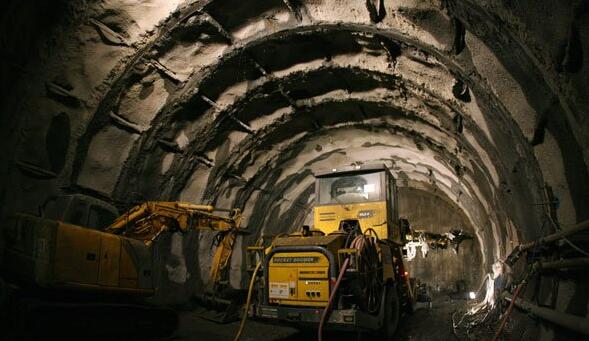The construction of high-speed railway tunnels requires advanced technology and precision engineering to ensure safe and efficient transportation. High-speed rail has become an important part of modern transportation infrastructure, providing fast and reliable travel for millions of people around the world. The construction of high-speed rail tunnels requires a combination of innovative design, specialized equipment and skilled labor to create a reliable, durable transportation network.
One of the keys to high-speed railway tunnel construction technology is the use of tunnel boring machines (TBM). TBMs are large machines equipped with circular cutting wheels that excavate the tunnel and install the tunnel lining at the same time. This method of tunnel construction minimizes disturbance to the surrounding environment and reduces the risk of ground subsidence. TBM can excavate tunnels quickly, making it an important tool for high-speed railway tunnel construction.
In addition to the use of TBMs, the construction of high-speed railway tunnels also requires the implementation of various engineering techniques to ensure the structural integrity of the tunnels. This includes the use of advanced measurement and monitoring systems to accurately assess geological conditions and ground stability throughout construction. By continuously monitoring tunnel construction activities, engineers can quickly identify any potential issues and take corrective measures to ensure the safety of the tunnel structure and surrounding environment.
In addition, the construction technology of high-speed rail tunnels also involves the use of special tunnel lining materials. The tunnel lining acts as a protective barrier, providing structural support and preventing water intrusion. Tunnel linings often use advanced concrete mixes and steel reinforcement to ensure durability and longevity. In addition, a waterproof membrane and drainage system were incorporated into the tunnel design to prevent water seepage and maintain a dry and safe environment inside the tunnel.
The construction of high-speed rail tunnels also requires precise planning and construction sequencing to minimize disruption to existing rail operations and local communities. Tunnel construction may involve temporary closures of existing rail lines or roads, as well as noise and vibration monitoring to mitigate the impact on nearby residents. By carefully coordinating construction activities and implementing effective mitigation measures, construction of high-speed rail tunnels can proceed with minimal inconvenience to the public.
To sum up, the construction technology of high-speed railway tunnels is a complex and delicate process that requires advanced engineering, professional equipment and skilled labor. The use of tunnel boring machines, advanced measurement and monitoring systems, specialized materials and precise planning are crucial to the successful construction of high-speed rail tunnels. With the continuous advancement of construction technology, high-speed rail tunnels will continue to play a vital role in the development of modern transportation infrastructure, providing fast, efficient, and sustainable travel methods for the future.
Post time: Dec-15-2023


